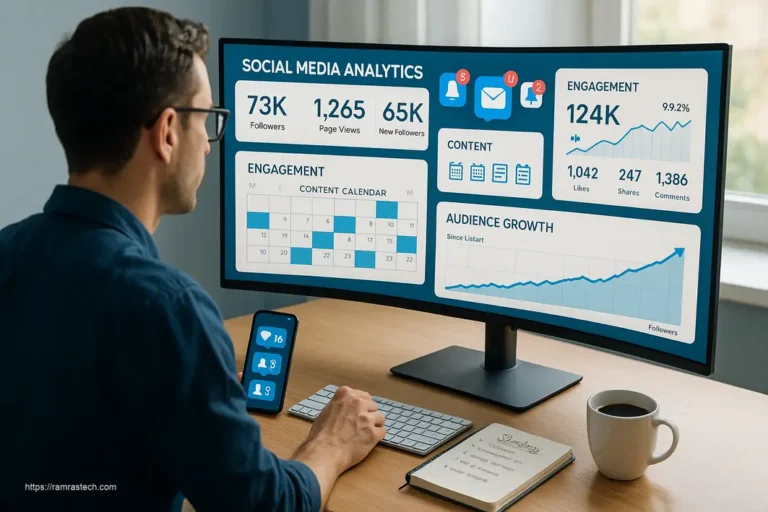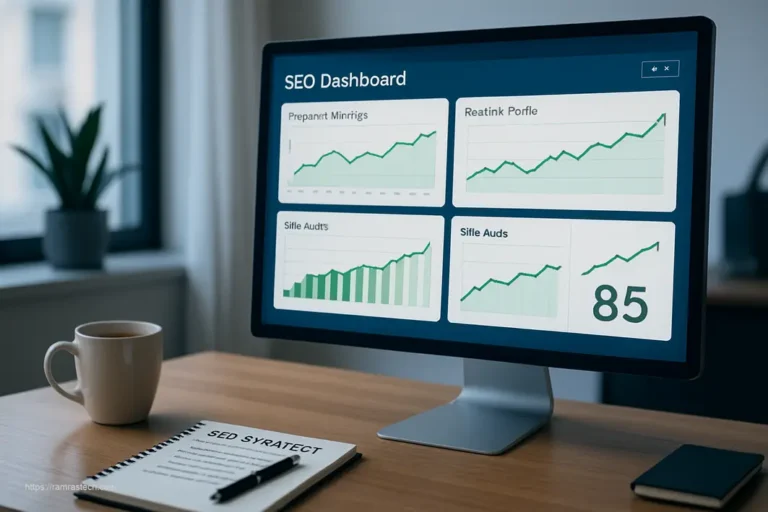10 Smart Search Engine Marketing Strategies to Boost Online Presence

Ever wondered why some businesses seem to appear everywhere when you’re searching online, while others remain virtually invisible? The answer often lies in effective search engine marketing strategies. In today’s digital landscape, where over 8.5 billion searches happen on Google every day, mastering SEM isn’t just advantageous—it’s essential for survival and growth.
As a digital marketer who’s helped dozens of businesses transform their online presence, I’ve seen firsthand how the right search engine marketing strategy can dramatically change a company’s trajectory. Whether you’re just starting to explore SEM or looking to refine your current approach, this comprehensive guide will equip you with actionable techniques to elevate your digital marketing game.
What is Search Engine Marketing (SEM) and Why Does It Matter?
Search engine marketing encompasses all activities aimed at increasing a website’s visibility in search engine results pages (SERPs). Unlike what some might think, SEM isn’t limited to paid advertising—it’s a comprehensive strategy that includes both paid and organic approaches.
SEM matters because it targets users who are actively searching for your products or services. These high-intent users are already interested in what you offer, making them much more likely to convert than audiences reached through other marketing channels.
The main components of search engine marketing include:
- Keyword research and analysis: Identifying which terms your target audience uses
- Campaign structure and management: Organizing your ads effectively
- Ad creation and optimization: Crafting compelling messages that drive clicks
- Bid management: Controlling how much you spend per click
- Performance tracking: Measuring results and adjusting accordingly
When implemented correctly, these components work together to create a powerful marketing channel that delivers measurable results and remarkable ROI.
The Critical Difference Between SEO and SEM
One of the most common confusions in digital marketing revolves around the terms SEO and SEM. Let’s clarify:
Search Engine Optimization (SEO) focuses exclusively on improving organic (non-paid) visibility in search results through website optimization, content creation, link building, and technical improvements.
Search Engine Marketing (SEM), on the other hand, is the broader term that encompasses both SEO and paid search advertising (primarily PPC campaigns).
Think of it this way: SEO is a subset of SEM, much like how squares are a type of rectangle. Every SEO strategy is part of SEM, but not all SEM is SEO.
Both approaches are valuable, but they work on different timelines and serve different purposes:
- SEO builds long-term authority and sustained traffic without direct per-click costs
- Paid search advertising delivers immediate visibility but requires ongoing investment
The most effective digital marketing strategies leverage both approaches synergistically, using insights from each to strengthen the other.
10 Powerful Search Engine Marketing Strategies to Implement Now
1. Develop a Comprehensive Keyword Strategy
Every successful search engine marketing strategy begins with thorough keyword research. This isn’t just about finding high-volume search terms—it’s about understanding user intent and discovering opportunities where you can meaningfully connect with potential customers.
Effective keyword research for SEM requires:
- Identifying seed keywords relevant to your business
- Expanding your list using keyword research tools like SEMrush, Ahrefs, or Google’s Keyword Planner
- Analyzing search intent behind each keyword (informational, navigational, commercial, or transactional)
- Grouping keywords into logical themes for campaign organization
- Prioritizing keywords based on relevance, competition, and potential return
Different keywords serve different purposes in your marketing funnel. Informational terms (like “how to improve website traffic”) target users in the awareness stage, while transactional queries (such as “buy SEO services”) reach people ready to convert.
Pro tip: Don’t overlook long-tail keywords—these longer, more specific phrases typically have lower competition, higher relevance, and often indicate stronger purchase intent.
2. Craft Compelling, Relevance-Driven Ad Copy
The success of your paid search engine marketing campaigns largely depends on your ad copy. Even with perfect keyword targeting and bidding, weak ad copy will result in poor click-through rates and wasted budget.
Here’s how to create ads that compel clicks:
- Address specific user needs shown through their search query
- Incorporate your primary keyword in headlines and descriptions
- Highlight your unique selling propositions that differentiate you from competitors
- Include a clear, action-oriented call-to-action that tells users what to do next
- Leverage ad extensions to provide additional information and increase ad real estate
- A/B test different variations to continuously improve performance
Remember that relevance is key. Your ad should directly address the search query and create a seamless journey from search to click to conversion.
For example, if someone searches for “affordable SEO services for small business,” your ad should specifically mention affordability, small business focus, and SEO services—not generic digital marketing messaging.
3. Optimize Landing Pages for Conversion
One of the most costly mistakes in search engine marketing is driving high-quality traffic to poor-quality landing pages. The disconnect creates a jarring experience for users and results in wasted ad spend.
Your landing pages should be:
- Highly relevant to both the search query and the ad that brought visitors there
- Mobile-optimized with fast load times (under 3 seconds)
- Focused on a single conversion goal with minimal distractions
- Designed with clear visual hierarchy directing attention to key elements
- Written with compelling, benefit-focused copy that addresses user needs
- Built with trust indicators like testimonials, reviews, and security badges
Research from Unbounce shows that while the average landing page conversion rate is around 4.02%, the top 25% of landing pages convert at 9.7% or higher. That difference can dramatically impact your marketing ROI.
“The partnership between your ads and landing pages is crucial for search engine marketing success,” notes conversion expert Oli Gardner. “They must tell a consistent, compelling story from the first click to the final conversion.”
4. Implement Smart Bidding Strategies
Gone are the days when setting manual bids for each keyword was the only option. Modern search engine marketing strategies leverage automation and machine learning through smart bidding.
Google Ads offers several smart bidding strategies, each aligned with different business goals:
- Target CPA (Cost Per Acquisition): Sets bids to get as many conversions as possible at your target cost per acquisition
- Target ROAS (Return On Ad Spend): Optimizes for value, targeting a specific return on ad spend
- Maximize Conversions: Aims to get the most conversions within your budget
- Enhanced CPC: Adjusts your manual bids to maximize conversions
Choosing the right strategy depends on your specific goals, available data, and budget. New campaigns often benefit from starting with Maximize Clicks or Enhanced CPC before transitioning to more sophisticated options once conversion data accumulates.
Remember that even automated bidding requires human oversight. Regularly review performance, adjust targets based on business needs, and be prepared to intervene if results don’t align with expectations.
5. Leverage Audience Targeting and Remarketing
While keywords reveal intent, audience targeting helps you reach specific users based on who they are, not just what they’re searching for. This capability has transformed search engine marketing from a purely intent-based channel to one that combines intent with identity.
Effective audience strategies include:
- Remarketing to website visitors who didn’t convert
- Customer match targeting using your existing customer data
- Similar audiences to reach new users who resemble your best customers
- In-market audiences targeting users actively researching products like yours
- Demographic targeting to focus on specific age groups, genders, or income levels
- Affinity audiences reaching users based on lifestyles and interests
When combined with keyword targeting, these audience strategies create powerful targeting combinations. For instance, you might bid more aggressively on competitive keywords when the searcher has previously visited your pricing page, or show different ad copy to new versus returning visitors.
According to a study by WordStream, combining RLSA (remarketing lists for search ads) with traditional search campaigns can increase conversion rates by 130% and decrease cost-per-conversion by 65%.
6. Optimize for Voice and Mobile Search
The rise of voice assistants and mobile search has fundamentally changed how people interact with search engines. Modern search engine marketing strategies must adapt to these changes.
For voice search optimization:
- Target conversational, question-based keywords (who, what, when, where, why, how)
- Create FAQ content that directly answers common questions
- Focus on featured snippets, which often serve as voice search results
- Use structured data markup to help search engines understand your content
For mobile optimization:
- Ensure fast mobile load speeds (use Google’s PageSpeed Insights to check)
- Design mobile-friendly landing pages with easy-to-tap buttons and readable text
- Implement click-to-call extensions for easy contact on mobile devices
- Consider location-based bidding strategies since mobile searches often have local intent
“Mobile isn’t just a device type—it’s a context that changes how people search and what they expect from the results,” explains Rand Fishkin, founder of SparkToro. This shift in user behavior means we need to rethink traditional desktop-centric marketing approaches.
7. Integrate SEO and PPC for Synergistic Results
The most sophisticated search engine marketing strategies don’t treat SEO and PPC as separate channels—they integrate them to create synergies that enhance overall performance.
Here’s how to make SEO and PPC work together:
- Share keyword performance data between channels to identify opportunities
- Use PPC to test potential SEO keywords before investing in longer-term content creation
- Target competitor brand terms with PPC while building organic visibility for your own brand
- Recapture organic rankings lost to SERP features by using Shopping ads, video ads, or other paid formats
- Create remarketing audiences from organic visitors for targeted follow-up messaging
- Increase SERP real estate by ranking organically while also running ads
A study by Google found that when ads are paused, organic clicks don’t make up for the loss in traffic—in fact, 89% of the traffic generated by search ads is not replaced by organic clicks when ads are paused. This demonstrates that paid and organic search often capture different audience segments.
By implementing an integrated approach, you’re essentially creating a 1+1=3 effect, where the whole of your search presence exceeds the sum of its individual parts.
8. Harness the Power of Local SEM
For businesses serving specific geographic areas, local search engine marketing offers tremendous opportunities to reach nearby customers with high intent.
To excel at local SEM:
- Claim and optimize your Google Business Profile with complete, accurate information
- Include location-specific keywords in campaigns (“plumber in Chicago” rather than just “plumber”)
- Use location extensions to display your address in ads
- Implement local service ads if available in your industry
- Set up geotargeting with appropriate radius settings
- Create location-specific landing pages for multi-location businesses
- Gather and respond to Google reviews to build local credibility
Local search intent often signals high conversion potential—someone searching for “emergency plumber near me” likely needs services imminently. In fact, research from Google shows that 76% of people who conduct a local search on their smartphone visit a business within 24 hours, and 28% of those searches result in a purchase.
9. Implement Comprehensive Analytics and Attribution
You can’t improve what you don’t measure. Sophisticated search engine marketing requires robust analytics and proper attribution to understand what’s working and optimize accordingly.
Essential measurement practices include:
- Setting up conversion tracking for all valuable actions (purchases, leads, downloads)
- Implementing value-based bidding where possible to optimize for revenue, not just conversions
- Using attribution models that fairly credit touchpoints throughout the customer journey
- Setting up regular reporting dashboards for easy performance monitoring
- Tracking phone calls generated through your search campaigns
- Analyzing assisted conversions to understand cross-channel impact
The attribution model you choose significantly impacts how you view performance. Last-click attribution gives all credit to the final touchpoint, while models like position-based, time decay, or data-driven attribution provide more nuanced views of the customer journey.
Consider using Google Analytics 4’s data-driven attribution, which uses machine learning to distribute conversion credit based on your specific data, rather than relying on one-size-fits-all models.
10. Stay Ahead with Emerging SEM Trends and Technologies
Search engine marketing continues to evolve rapidly, with new features and capabilities regularly introduced. Staying ahead of these changes is essential for maintaining competitive advantage.
Key trends to watch in 2025 include:
- Artificial intelligence and automation in campaign management
- Visual search optimization for Google Lens and similar technologies
- Greater personalization through dynamic ad content
- Cookieless tracking solutions as privacy regulations tighten
- Video results integration in traditional search
- Voice commerce capabilities for purchase-ready voice searches
- Enhanced analytics through machine learning
“The most dangerous thing in search marketing isn’t implementing new strategies—it’s continuing to use outdated ones while your competitors evolve,” warns Larry Kim, CEO of MobileMonkey.
Allocate time each month to learn about new features and test emerging capabilities on a small scale before rolling them out more broadly.
Measuring the Success of Your Search Engine Marketing Strategies
How do you know if your search engine marketing strategies are actually working? While the specific metrics to track depend on your goals, these key performance indicators (KPIs) provide a solid foundation for evaluation:
Campaign Performance Metrics
- Click-Through Rate (CTR): Percentage of impressions that result in clicks
- Conversion Rate: Percentage of clicks that result in conversions
- Cost Per Click (CPC): Average amount paid for each click
- Cost Per Acquisition (CPA): Average cost to acquire a conversion
- Quality Score: Google’s rating of the quality and relevance of your keywords and ads
- Impression Share: Percentage of available impressions your ads received
Business Impact Metrics
- Return On Ad Spend (ROAS): Revenue generated for each dollar spent on advertising
- Customer Acquisition Cost (CAC): Total cost to acquire a customer across all channels
- Lifetime Value (LTV): Predicted revenue from a customer throughout their relationship with your business
- LTV:CAC Ratio: Relationship between customer value and acquisition cost
Regularly reviewing these metrics helps identify optimization opportunities and ensures your search engine marketing strategy remains aligned with business objectives.
Common SEM Pitfalls to Avoid
Even seasoned marketers can fall into these common search engine marketing traps:
1. Focusing on Vanity Metrics
Clicks, impressions, and even rankings don’t necessarily translate to business results. Maintain focus on conversions, revenue, and return on investment rather than metrics that look good in reports but don’t impact the bottom line.
2. Neglecting Negative Keywords
Failing to use negative keywords results in wasted spend on irrelevant searches. Regularly review search term reports and add negative keywords to improve targeting precision.
3. Poor Campaign Structure
Jumbled, disorganized campaigns make optimization difficult and reduce quality scores. Structure campaigns logically with tightly themed ad groups containing closely related keywords.
4. Ignoring Mobile Experience
With over 60% of searches now occurring on mobile devices, neglecting mobile optimization is a costly mistake. Ensure all landing pages provide excellent mobile experiences.
5. Set-It-and-Forget-It Mentality
Search engine marketing requires ongoing attention and optimization. Markets change, competitors adjust tactics, and platforms evolve—your strategies must adapt accordingly.
FAQs About Search Engine Marketing Strategies
What’s the difference between white-hat and black-hat SEM?
White-hat SEM refers to ethical strategies that follow search engine guidelines while focusing on providing value to users. These practices build sustainable results and include quality content creation, proper keyword research, and legitimate link building.
Black-hat SEM involves manipulative tactics that violate search engine terms of service to gain quick advantages. These practices (like keyword stuffing, cloaking, or buying links) may yield short-term gains but typically result in penalties that cause lasting damage to your search visibility.
Always choose white-hat methods for sustainable growth and brand protection.
How much should I budget for search engine marketing?
Your SEM budget depends on factors like:
- Industry competitiveness (legal and insurance keywords typically cost more than retail)
- Business goals and growth targets
- Customer lifetime value
- Geographic targeting scope
- Seasonality of your business
As a starting point, many businesses allocate 7-12% of their revenue to marketing, with SEM typically representing 30-50% of the digital marketing budget.
Rather than setting arbitrary budgets, consider working backward from your goals. If you know your conversion rate and the value of a conversion, you can calculate the clicks needed and the budget required to achieve specific revenue targets.
How long does it take to see results from search engine marketing?
One of the greatest advantages of paid search is its immediate impact—with properly set up campaigns, you can start generating clicks and conversions the same day you launch.
SEO components of your search engine marketing strategy take longer, typically showing significant improvements within 3-6 months, with more competitive terms potentially taking longer.
For the most immediate results, start with highly targeted paid search campaigns while simultaneously building your organic foundation.
Should small businesses invest in SEM or focus solely on SEO?
While SEO offers excellent long-term ROI, most small businesses benefit from a combined approach. Paid search provides immediate visibility and data while your organic presence develops.
For budget-conscious small businesses, consider:
- Starting with a focused paid campaign targeting your most profitable keywords
- Collecting data on keyword performance to inform SEO priorities
- Gradually building out content for organic rankings as budget allows
- Leveraging local SEO which often has lower competition than national terms
This balanced approach provides immediate visibility while building toward sustainable organic traffic.
Conclusion: Building Your Search Engine Marketing Mastery
Effective search engine marketing isn’t about quick hacks or secret formulas—it’s about strategically connecting with the right audience at the right moment with the right message. By implementing the ten strategies outlined in this guide, you’ll create a robust SEM framework that drives qualified traffic, conversions, and business growth.
Remember that SEM is both an art and a science. The technical aspects—keyword selection, bid management, analytics—provide the foundation, while creative elements like compelling ad copy and engaging landing pages create connections that turn clicks into customers.
The most successful marketers maintain a testing mindset, continuously experimenting with new approaches while measuring results against business objectives. They understand that search engine marketing isn’t a one-time campaign but an ongoing process of refinement and optimization.
As search technology evolves and user behavior changes, the specific tactics may shift, but the core principles remain constant: understand your audience, deliver relevant experiences, measure what matters, and continuously improve.
What search engine marketing strategies have delivered the best results for your business? Share your experiences in the comments below!






